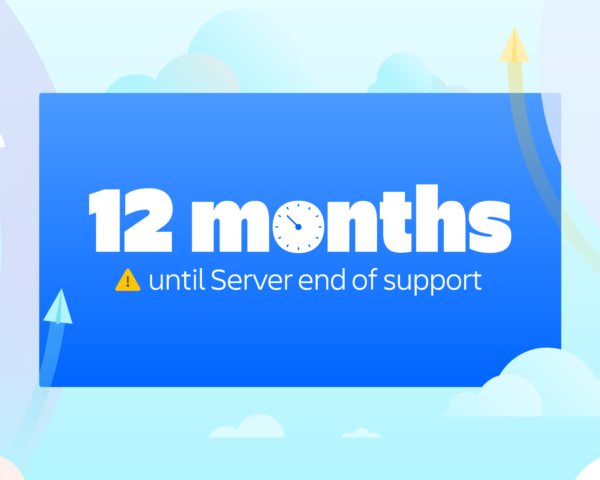Which Atlassian Cloud plan is right for you?
Here’s a detailed breakdown of our offerings.
So, you’ve decided Atlassian cloud is the best choice for your business. You’re ready to take advantage of the lower costs, better scalability, and remote-friendly setup. And you’re starting to evaluate your options.
Now, the question is: Which Atlassian plan is right for you? Should you start with our free tools? Settle into the Standard plan? Or take advantage of the additional features, guarantees, and support of Premium or Enterprise?
To help you figure it out, we’ve put together a short guide outlining the core differences between plans, who each plan is probably right for, and how to choose the best option for your business.
Atlassian’s cloud plans compared
| Feature | Free | Standard | Premium | Enterprise |
| Industry-leading privacy and security | ✅ | ✅ | ✅ | ✅ |
| AWS Cloud infrastructure | ✅ | ✅ | ✅ | ✅ |
| Data backups | ✅ | ✅ | ✅ | ✅ |
| GDPR-compliant by default | ✅ | ✅ | ✅ | ✅ |
| Access to thousands of apps and integrations | ✅ | ✅ | ✅ | ✅ |
| User limit per site | 10 users / 3 agents | 35,000 users | 35,000 users | 35,000 users |
| Storage | 2GB | 250GB | Unlimited | Unlimited |
| Support | Community | 9am-5pm (Regional) | 24/7 | Dedicated |
| Audit logs | ✖️ | ✅ | ✅ | ✅ |
| Financially-backed uptime guarantee | ✖️ | ✖️ | 99.9% | 99.95% |
| Guaranteed support response times | ✖️ | ✖️ | 1 hour | 30 min |
| Atlassian Guard | Add-on | Add-on | Add-on | Included |
| Sandbox to test apps and preview changes | ✖️ | ✖️ | ✅ | ✅ |
| Data residency | ✖️ | ✅ | ✅ | ✅ |
| Release tracks | ✖️ | ✖️ | ✅ | ✅ (Except Bitbucket) |
| Scale with unlimited sites | ✖️ | ✖️ | ✖️ | ✅ |
| Multi-site admin | ✖️ | ✖️ | ✖️ | ✅ (Except Bitbucket) |
| Centralized user billing | ✖️ | ✖️ | ✖️ | ✅ |
Product-specific comparisons
For a deeper dive into product-specific differences in the plans, visit our in-depth product charts:
Free: for small teams making a big impact
If you’re heading up a small team with big goals, our Free plans might be just what you’re looking for. Our industry-leading security, privacy, and compliance features are built in, and Free plans will give you access to our tools’ basic features, along with over 1,000 apps and integrations.
The benefits of Free plans include:
- Community support
- Up to 10 users in Jira, Confluence, and Jira Core
- Up to 3 agents in Jira Service Management
- Up to 5 users in Opsgenie, Statuspage, and Bitbucket
- 2GB of storage
- When you’re ready to grow, it’s easy to upgrade
Not a small team? Free plans can also be a good fit for larger teams who want to test-drive Atlassian’s products before taking the plunge into a paid plan. Think of it as a way to explore our core features and get a handful of team members up to speed on our products before you onboard the whole team.
Standard: more users, support, and storage
Our Standard plans were built for small and mid-sized businesses who need a little more to get the job done. Go for Standard if you have more than 10 users, need more storage, and want access to Atlassian’s support team during working hours.
You’ll also get access to additional product features, like audit logs in Jira and Confluence, page insights in Confluence, and up to 100 major incidents per month in Jira Service Management (compared to the free plan’s five).
The benefits of our Standard plans include:
- Up to 10,000 users in Jira, Confluence, and Jira Core
- Up to 5,000 agents in Jira Service Management
- Support from 9am – 5pm in your time zone
- 250GB storage
- Data residency
- Additional features in each of our tools
Premium: high availability, unlimited storage, 24/7 support
Growing fast and need more features, unlimited storage, and more robust support? If so, Premium was built with you in mind. Premium plans guarantee 99.9% uptime, 24/7 support, and support responses in an hour or less. They also come with advanced features to help your team scale, like advanced roadmaps in Jira Software, analytics and bulk archiving in Confluence, and global and multi-project automation in Jira Software and Jira Service Management.
The benefits of our Premium plans include all the benefits of Standard, plus:
- 24/7 Premium support, with responses to critical issues in one hour or less
- Financially backed 99.9% uptime SLA
- Unlimited storage
- Additional product features, including a sandbox environment to test apps and review changes
Enterprise: Unlimited instances and centralized user billing
If you’re representing an Enterprise company, chances are you’re looking for more control and flexibility from your cloud products as you scale. Enterprise customers benefit from a simplified billing structure and flexibility to set up multi-instance environments, with enterprise-grade security and compliance built-in.
In addition to unlimited storage and the features of Premium, Enterprise customers also get dedicated 24/7 support with 30-minute response times, as well as Atlassian Guard automatically included.
The benefits of our Enterprise plans include all the benefits of Premium, plus:
- Unlimited instances with centralized user billing
- 99.95% uptime SLA guaranteed
- Responses to critical support requests in 30 minutes or less
- Atlassian Guard included
If you’re a customer migrating from our self-managed products to cloud, you’ll also get a personalized migrations support.
Atlassian Guard
Atlassian Guard is included with Enterprise plans, but also pairs well with Premium or Standard for companies who want a few extra layers of security.
Those extra security layers include:
- SAML SSO
- Automated user provisioning and de-provisioning (SCIM)
- Organization audit logs
- API token controls
- Enforced two-step verification
- Organization insights
- CASB integration with McAfee MVISION Cloud
- Active directory sync
- Device visibility
When added to a non-Enterprise plan, Access costs around $1 per user per month.
How to choose your ideal plan (and get buy-in)
1. Identify your needs, wants, and nice-to-haves
We’d all love to have every bell and whistle at our fingertips, but we recommend starting the decision process by identifying your non-negotiables (needs). What features, support levels, and uptime guarantees do you need in order for your business to function?
From there, move onto the wants – the things that are important to your team but that you could technically do without, even if it costs your team a little extra time or hassle.
After that, make a list of your nice-to-haves – the features you’d use if you had them but won’t hinder your team if you don’t.
2. Based on your needs, identify your bare minimum plan
If all you need is five users and basic features, the Free plan is your bare minimum. If 99.9% guaranteed uptime is a non-negotiable, Premium is the least you can live with. And if you need unlimited instances with centralized user billing, your choice gets easy: Enterprise is your bare minimum (and only) option.
3. Identify your ideal plan
A Standard plan might be enough for you to get the job done, but could another plan improve productivity, collaboration, and peace of mind? Take a look at your want and nice-to-have lists and identify your ideal plan. Which plan has the features that would help your teams run faster and more smoothly?
4. Do the math on the value of your bare minimum and ideal plans
How much time will each save your team? How much money? How many headaches? How much task-switching?
It’s easy to choose the bare minimum plan that you need in order to take advantage of the obvious savings. But are there hidden savings in the ideal plan that make it a better value?
For example, if you figure out that automation will save your team five hours of labor each month and the average labor hour costs the company $50, you can make the case that automation alone will save the company $250 per month. (Which is just the kind of argument to put a fiscally conservative boss in the mood to give your team the more robust toolset you need.)
5. Take a look at your budget
Do you have a strict budget you have to work within? How much can you spend on cloud tools? Is the business open to discussing a larger budget if (as noted above) it could save the team considerable time or provide value in other ways?
6. Pitch the plan
Once you have a clear sense of what you need, what you want, how it fits into your existing budget, and whether you feel you can fight for more budget to get your teams additional value, it’s probably time to take your recommendation to your team lead or board.
Lead the conversation with value – the value of time saved, task-switching avoided, employee satisfaction, better team dynamics, or whatever other high-value (often money-saving) benefits you’ve identified.
This is the time to pull out figures like the automation example above. How much time or money do you anticipate your choice will save teams? The more you can boil your tool choices down to how they’ll improve the business bottom line, typically the better management (especially non-technical management) will respond.
Still researching our tools to find the best fit for your team? Try them free!


